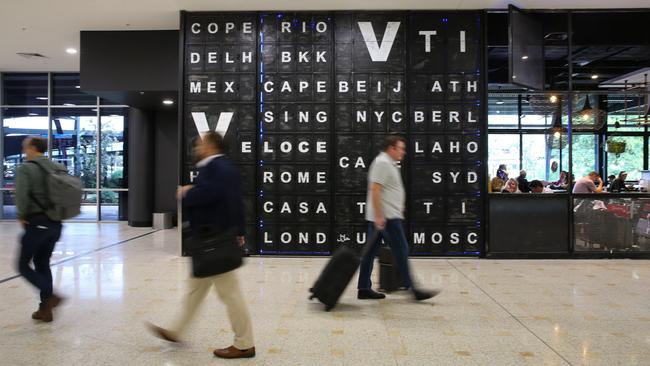Federal Budget 2025: Labor forecasts net migration fall to 225,000 amid rising departures
Labor is forecasting a dramatic fall in net overseas migration to 225,000 as the rate of new arrivals slow and the temporary migrants who fuelled a post-pandemic population boom exit the country.

Labor is forecasting a dramatic fall in net overseas migration to 225,000 as the temporary migrants who fuelled a post-pandemic population boom exit the country, and the cost of managing unlawful non-citizens jumps 5.5 per cent.
As overseas immigration shapes up as an issue that will distinguish the major parties at the federal election in May, Tuesday’s federal budget showed that overseas migration was declining amid a government push to drive down overseas arrivals.
After Labor introduced a raft of measures to cut temporary migration, including a major crackdown on international students, the budget estimates that net overseas migration will decline to 225,000 in 2026-27 and in the two following years.
The Albanese government revised its prediction for next year’s net migration figure up by 5000 people.
It forecast in the mid-year fiscal update in December that the NOM (the total overseas arrivals minus the departures) would reach 255,000 people in 2025-26.
It also revised down the figure for last year by the same number to 335,000 net migrants in 2024-25.
Labor has also come under attack for its response to a landmark High Court case that saw an initial 150 dangerous non-citizens released into the community, with the management of unlawful non-citizens costing the budget $1.9bn in 2025-26, marking an increase of 5.5 per cent from last year.
Immigration became a heated political issue when the number of temporary migrants soared to 528,000 in 2022-23, after international borders reopened following the Covid pandemic, in a bid to plug labour market shortages.
Amid criticism that the surge was placing pressure on the housing market and infrastructure, Labor sought to halve the number of temporary migrants in two years, largely by introducing controls on the international student intake.
“Net overseas migration is declining from its peak in 2022-23 reflecting lower migrant arrivals,” the budget papers said.
“NOM is forecast to ease further over the forward estimates.
“Arrivals are expected to continue to decline in 2024-25 before stabilising in 2025-26.
“Departures are expected to pick up from recent sustained lows as more people who arrived after the pandemic near the expiry of their visa.”
The Coalition has vowed to pursue steeper cuts to the migration program than Labor, as well as to international student numbers, but has declined to release its own targets until after the budget.
Peter Dutton said he would slash permanent migration by 25 per cent from 185,000 to 140,000 over two years, in a bid to reduce pressure on the housing market, during last year’s budget reply speech.
But in a radio interview the next day, the Opposition Leader revised the Coalition’s target was to “bring back the net overseas migration to a figure of about 160,000”.
He then appeared to dump this target in December, stating that the Coalition would “have a look at the economic settings when we come to government”.
Last week Mr Dutton further confused the opposition’s message on immigration, denying that he had ever “walked back” his migration target, adding: “that was an ABC report or something”.
“Our plan is to reduce the permanent migration program down from where it is at the moment to 140,000 in year one and two, and then we bring it back up in years three and four,” he said.
Dr Chalmers said the government was managing the migration numbers “down quite considerably” as the government sought to “steadily” manage the figure down.
“That’s deliberate. There was a spike in net overseas migration after Covid, students, tourists and the like and fewer departures,” the Treasurer told Sky news on Sunday.
The NOM came in at 446,000 in 2023-24, which was significantly higher than the 395,000 forecast in last year’s federal budget.
Australian Bureau of Statistics figures released last week show that net migration was 379,800, in the year to September.








To join the conversation, please log in. Don't have an account? Register
Join the conversation, you are commenting as Logout